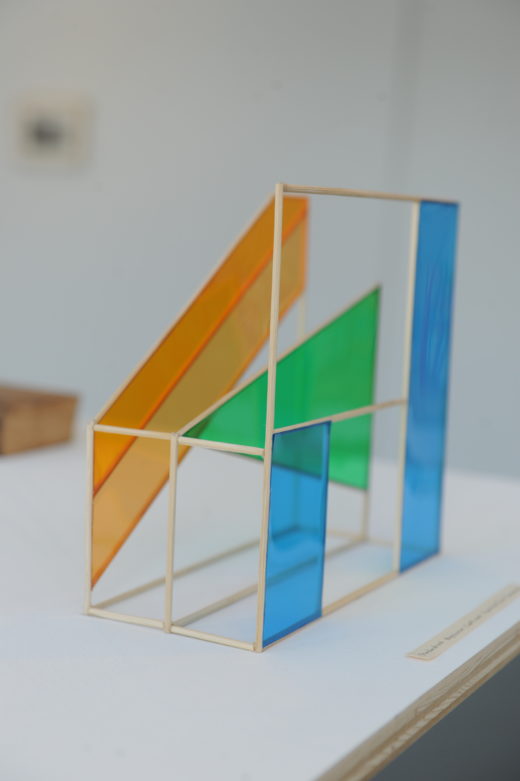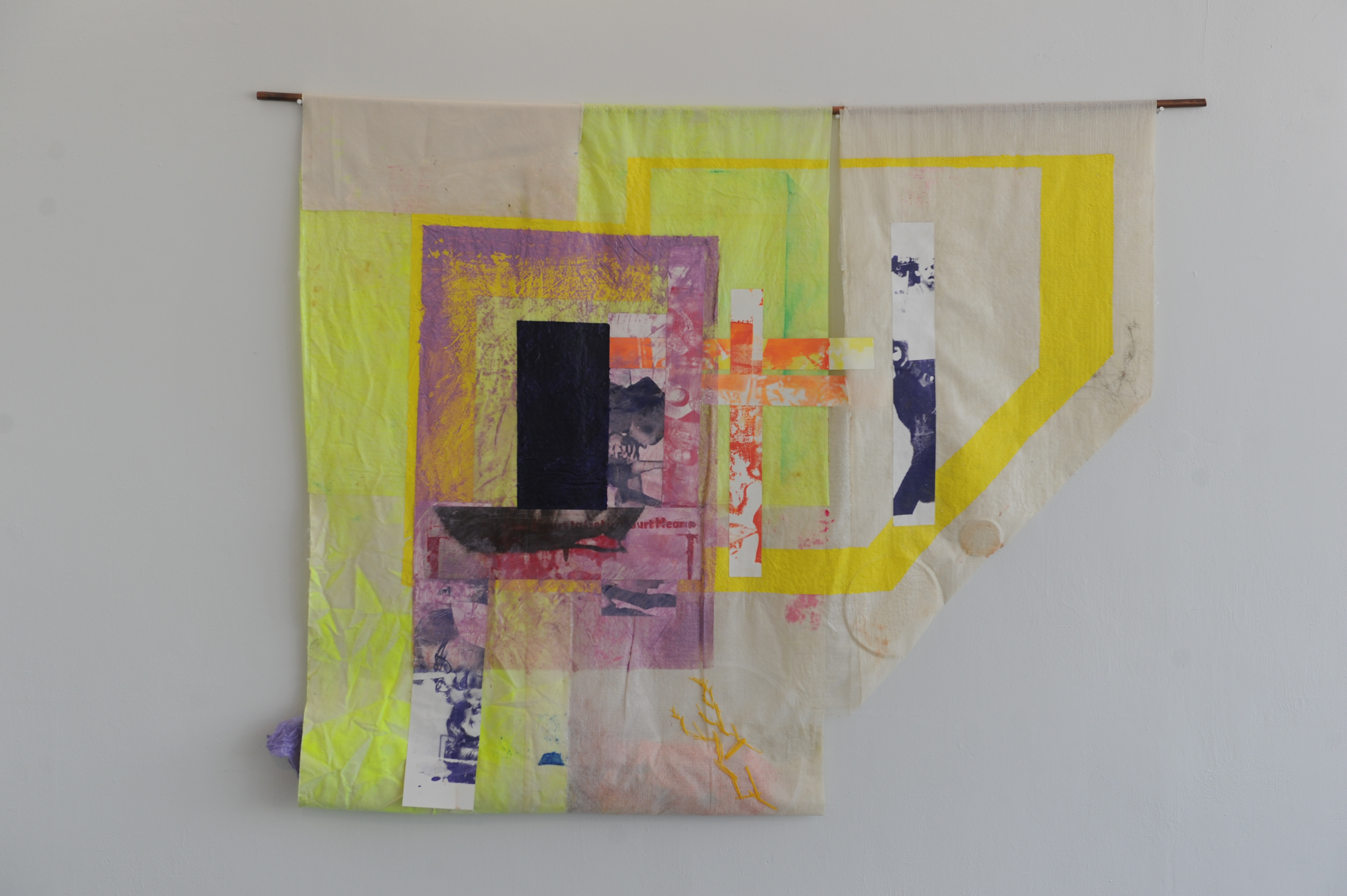
Richard Ibghy and Marilou Lemmens, Standardized Regression Coefficients Predicting Team Performance. 2016-ongoing, Wood, string, metal, plastic and acetate, 9” x 4” x 8.25”. Courtesy the artists and Jane Lombard Gallery, New York Gallery
Walking into the show, the vibrancy of the works’ colors is the first impression. Drawn to the tables in the middle of the gallery, one sees the delightfully delicate sculptures by Richard Ibghy and Marilou Lemmens. These diorama-ish models of graphs, diagrams, time and motion studies, bar and flow charts represent the means for measuring value in the workplace. Despite their elegance, they’re meant to evoke the exacting and life-sucking doctrines of scientific management, the process of abstracting humans and their labors into numerical units for the measurement of efficiency—using color as a means of signifying statistical difference.
A group of works by Tomashi Jackson also exude vivid color. Their titles belie their apparent “pure” abstraction. Apartheid Blues II (Old Texas Courtroom), consists of stretched pieces of canvas and gauze, affixed in a way that feels both slapdash and highly intentional. Another work, titled Untitled Color (Color Study I), is composed of a stitched, multi-colored, striped yarn, rather like a sweater with a full neckpiece, pulled over a wooden stand. Both of these works hint at the not-so abstract role that abstract art has played in society.
 Torkwase Dyson, Strange Fruit (He She), 2015. Acrylic on board, 60” x 60”. Courtesy the artist
Torkwase Dyson, Strange Fruit (He She), 2015. Acrylic on board, 60” x 60”. Courtesy the artist
During a talk with curator Rakes at the show’s opening, Jackson pointed out an under-discussed parallel occurrence in the history of color. At the halfway mark of the 20th century, Barnett Newman was perfecting his color field paintings, signaling the rise of Abstract Expressionism in the wake of World War II. At the same time, Thurgood Marshall, the first Black justice on the Supreme Court, was heralding in the era of desegregation through landmark legislation.
Jackson pointed out that both Newman and Marshall were making the same argument at the same time, but in their respective fields: color is an unstable, relative thing. Red and blue both change when placed next to each other, as do black and white. As Jackson semi-quipped, “Brown vs. Board was the best piece of public art in history,” a radical upheaval of public space that, still not fully realized, resulted in re-assertions of segregation by white supremacists intent on keeping color fixed and hierarchical.
 Tomashi Jackson, Grape Drink Box (Anacostia Los Angeles Topeka McKinney) , 2017. Mixed media on gauze, 54” x 70.25”, Courtesy the artist and Tilton Gallery, New York
Tomashi Jackson, Grape Drink Box (Anacostia Los Angeles Topeka McKinney) , 2017. Mixed media on gauze, 54” x 70.25”, Courtesy the artist and Tilton Gallery, New York
The show at ArtCenter takes on entirely new meaning once you recognize what’s at stake. Torkwase Dyson’s work is more explicit in this regard: one of the paintings, titled Strange Fruit (He, She), with hundreds of black circles atop grids—resembling, in this viewer’s eye, the architecture of concentration camps—is based on the artist’s deep research into the 4,000 lynchings that occurred in the United States between 1877 and 1950. Like Ibghy and Lemmens’ work, the painting serves as a form of data visualization, except this is a statistic of a most grisly human labor, one that is often kept hidden from view.
Lest we think that it is only contemporary abstract artists that are dealing with real-world referents, Rakes reminds us, in the publication accompanying the show, “The construction of abstraction as a 20th-century phenomenon by Modernist art historians (Clement Greenberg et al) forged an enduring artificial distance between abstraction and representation, and between form and content.” To wit: Hanging on the hallway leading into the gallery, a series of photographs from the 1970s by Eugenio Espinoza serve as a sort of curatorial footnote to the exhibition. They depict the Venezuelan artist’s large, black-gridded cloths in the real world, participatory sculptures that served as a literal manifestation of abstraction interlocuting with the social real.
In an answer to the original question—what is the difference between documentary and abstract art?—we find that abstraction is critical to the construction of the real world, and that documentary is a form of art that only gives a slight glimpse at the complexity of existence. Through the efforts of the artists on view, one realizes that form and function are co-constituted, and how things like color, shapes, and lines lead straight to the most pressing concerns of our time.
Previously on view at ArtCenter/South Florida from September 30, 2017 – January 2, 2018.
Rob Goyanes is a humyn living in New York City. His writing has appeared in e-flux journal, Miami Herald, L.A. Review of Books, etc. He’s working on a book about a Soviet jet fighter made from paper.










